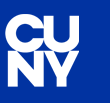Dissertations, Theses, and Capstone Projects
Date of Degree
9-2025
Document Type
Doctoral Dissertation
Degree Name
Doctor of Philosophy
Program
Economics
Advisor
Miles Corak
Committee Members
Theodore Joyce
Lilia Maliar
Wim Vijverberg
Subject Categories
Economics | Labor Economics
Keywords
Inequality of opportunity, Dynamic complementarity, Supervised machine learning, Educational inequality, COVID-19, Learning loss
Abstract
This dissertation consists of three chapters.
Chapter 1: Measuring Income Inequality of Opportunity: Accounting for Dynamic Complementarity
The egalitarian principle of justice attributes life success to two main factors: circumstances beyond an individual’s control and personal effort within it. Roemer’s equality of opportunity concept proposes compensating individuals for inequalities arising from unequal circumstances. Dynamic complementarity in skill formation suggests that early childhood skill gaps often persist into adulthood, leading to unequal outcomes. Using PSID data, I classify all measurable factors before age 18 (the age of majority) as circumstances, creating sets based on critical childhood stages to account for dynamic complementarity. My findings show that over 40% of total income inequality can be attributed to inequality of opportunity before adulthood. Moreover, nearly one-third of total income inequality stems from circumstances faced by individuals at or before age five. Using only circumstances identified as important through a random forest—a supervised machine learning model—based on permutation-based importance scores, I estimate the lower bound of inequality of opportunity’s share in total inequality before the age of majority to be about 31%. These results underscore the importance of considering childhood circumstances when measuring inequality of opportunity. This consideration is crucial for any public policy involving ex-post compensation or ex-ante investment in human capital to equalize opportunities.
Chapter 2: Inequality of Opportunity in College Degree Attainment: Estimates from the PSID Child Development Supplement
Adult life outcomes, according to Roemer, result from two factors: circumstances beyond individual control and effort which individuals can control. The idea of equality of opportunity requires that individuals’ adult outcomes should depend on effort, not circumstances. However, drawing the boundary between circumstance and effort requires normative judgment. Researchers have used the age of majority at 18 as a responsibility cutoff between circumstance and effort to estimate inequality of opportunity. After this age, individuals are considered responsible for their actions, which are hence classified as effort. This essay examines inequality of opportunity in college degree attainment after the age of majority at 18 using childhood circumstances before the child enters high school. Using data on children aged 3-12 from the 1997 Child Development Supplement of the Panel Study of Income Dynamics, I estimate the inequality of opportunity as reflected in dissimilarity index in college degree attainment to be in the range of 0.20-0.26. For sample restricted to those who attended college the inequality of opportunity in degree attainment ranges from 0.16- 0.21. Important circumstances, identified by conditional inference forest model, such as family income, family environment, primary caregiver’s education, test score performance explain about 65-75 percent of inequality of opportunity in college degree attainment. The results seem to suggest a weak yet persistent link between unequal childhood circumstances and post-secondary education outcomes after the age of majority.
Chapter 3: Effects of COVID-19 on the Academic Performance of College Students
I analyze the impact of the COVID-19 pandemic on undergraduates’ performance in an introductory economics course at a large public university. One challenge in analyzing student academic outcomes during the pandemic was the explicit change in grading policies by college administrators as well as the implicit adjustment by faculty designed to mitigate the impact of an abrupt shift to online learning amidst the stress and uncertainly associated with the pandemic. To limit the impact of grading policies I analyze changes in the raw scores on a common final administered to all sections of the course the year before and for four semesters after the spring of 2020. To limit variation in the difficulty of the exams from before to during the pandemic, I compare student performance on nearly identical questions on the final exam over time. Adjusted mean scores on the common final fell by a point and the probability of answering the qualitatively same question on the final fell, on average, by 1.5 percentage points. Students with lower GPAs were 3.3 percentage points (or 0.02 standard deviations) less likely to answer similar questions correctly relative to students with higher GPAs during the pandemic—indicating learning loss among low GPA students. Also, the mean probability of answering a nearly identical question correctly before and after suddenly moving to online classes increased by 5.6 percentage points.
Recommended Citation
Desai, Aman, "Empirical Essays in Income and Educational Inequality of Opportunity" (2025). CUNY Academic Works.
https://academicworks.cuny.edu/gc_etds/6381


